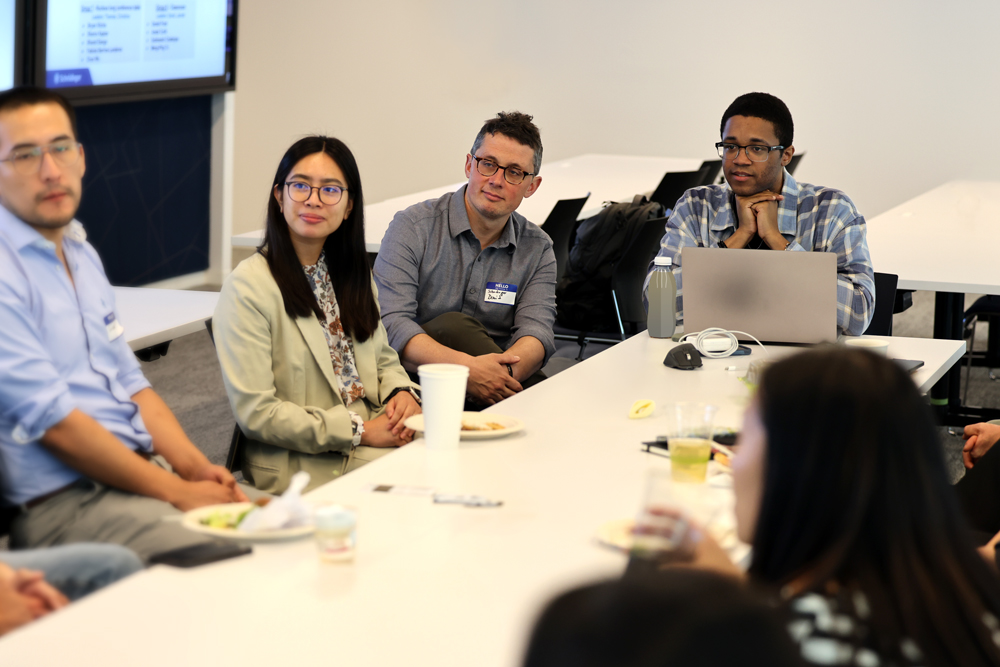Education Corner
Key takeaways from Educator's Week 2023: Empowering Educators with Research-Grade Computational Tools
By Katherine Bay, Ph.D., Schrödinger Education Team

Dr. Katherine Bay
Senior Scientist II, Academic Curriculum Designer
Schrödinger Education Team
Dr. Katherine bay is a Senior Scientist responsible for leading the Teaching with Schrödinger program. She develops academic curricula that integrate Schrödinger’s molecular modeling tools in the classroom. Prior to joining Schrödinger, she was an Assistant Professor of Organic Chemistry and earned her Ph.D. in Organic Chemistry from UCLA.
The Schrödinger Education team recently hosted a virtual event called Educator’s Week which brought together K-12 and university educators to discuss educational technology, such as molecular modeling, in chemistry and biology classrooms. Here are a few takeaways:
Web-based tools eliminate historical educational technology barriers

Keynote speaker, Prof. Alain Viel, Senior Lecturer in Molecular and Cellular Biology at Harvard University, highlighted the power of science visualization in the classroom. He discussed LabXchange – a free science learning platform with a library of more than 21,000 instructor-developed resources.
Prof. Hans De Winter from University of Antwerp, Prof. Heidi Hendrickson from Lafayette College, Prof. Rui Xiong from Arizona State University, among others, discussed using the Teaching with Schrödinger program, which offers a web-based virtual environment and ready-made lesson plans for teachers to incorporate molecular simulation into their biology and chemistry classes (learn more below). From Biochemistry, Medicinal Chemistry, all the way to an undergraduate Drug Hunter for Beginners course, high school and college-level educators across the world have leveraged these tools to help their students visualize and master complex scientific concepts.
CUREs benefit from integrating cutting-edge molecular modeling technology

Prof. Tracy Covey from Weber State University outlined her Course-Based Undergraduate Research Experience (CURE) course in which students learned foundational medicinal chemistry concepts and explored computer aided drug design (CADD) applications through Schrödinger software. Prof. Craig Smith from the University of Washington, St. Louis discussed a CURE course called Structural Bioinformatics of Proteins where students learn how to use the visualization software PyMOL and other cutting-edge bioinformatics tools and methods to analyze protein structures to determine high-quality, three-dimensional coordinates provided by the Seattle Structural Genomics Center for Infectious Disease. Integrating computational molecular modeling into CUREs gave students a better understanding of the professional possibilities in drug discovery and encouraged more engagement in the classroom.
Register for free here to access all of the talk recordings from Educator’s Week.
Teaching with Schrödinger Program
A web-based version of our proprietary software, Maestro, is now more accessible to educators and students around the world through the “Teaching with Schrödinger” molecular modeling program, a virtual desktop environment for science education. With this program, educators and students can simply log into a virtual workstation through a web browser that has Schrödinger’s core suite of software already downloaded and ready to use for learning. And all computational jobs are submitted to a virtual cluster housed through Schrödinger – no need to use institutional computing resources. Check out the educational materials such as lesson plans and worksheets that embed computational exercises into chemistry and biology curricula at Teaching with Schrödinger.
Want to learn how to get web-based molecular modeling into your classroom through the Teaching with Schrödinger program? Contact us at teaching@schrodinger.com for a free demo or download a flyer for more information.

Schrödinger’s suite of software is now easily accessible to students and educators.